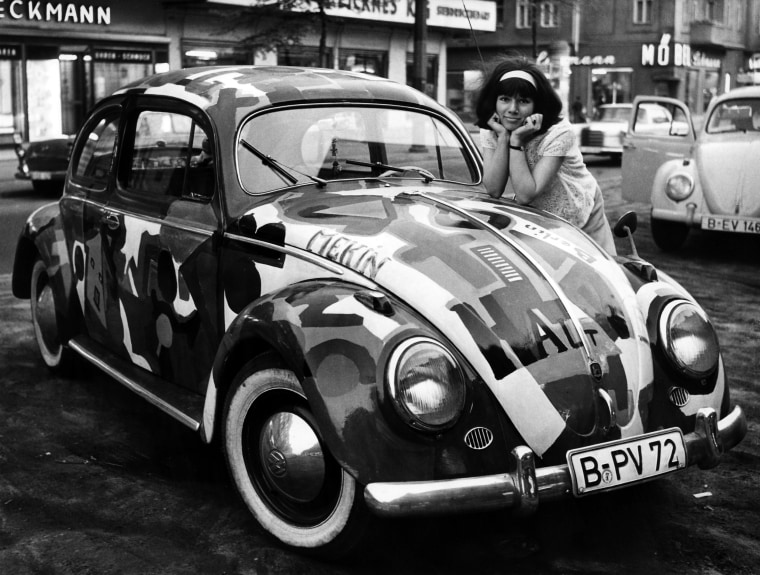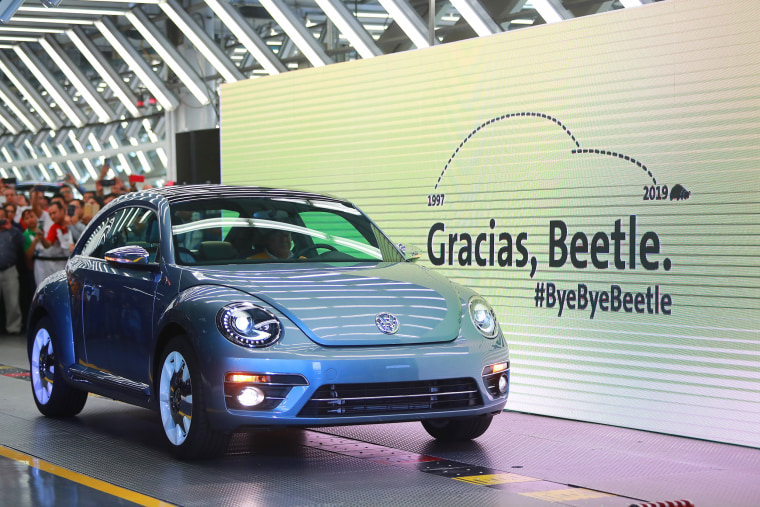After eight decades, the longest-running car in automotive history is about to disappear. On Wednesday, the last Beetle rolled off the line at Volkswagen’s sprawling assembly plant in Puebla, Mexico.
It’s been a long, strange trip. Originally conceived by Adolf Hitler as the “people’s car” — or Volkswagen, in German — the Beetle eventually became the most popular vehicle in the world.
The little car has come back from the dead twice before, however, and a senior VW official has suggested one should “never say never” when it comes to bringing the Beetle back to life yet again.
Designed by Austrian automotive engineer Ferdinand Porsche — who would later launch his own sports car company — the Beetle was first produced in 1938. By 1972, production had topped 15 million, surpassing demand for Henry Ford’s long-lived Model T.
In recent years, VW has tried to revive demand with a series of new versions but, in an era when SUVs and crossover utility vehicles have shunted sedans and coupes to the side of the road, slumping sales made the decision inevitable.
But the initial run was limited. The first Beetle rolled out of the then-new VW plant in Wolfsburg, Germany, just months before the opening shots of World War II. The factory was quickly converted to military production and, by the time the guns fell silent, the Allies had bombed it into rubble.
That might have marked the end of a very brief history were it not for British Army Major Ivan Hirst, who was assigned to help restart German manufacturing. He found one car that somehow survived the bombing and decided to put it back into production. A few years later, the first of the reborn Beetles was shipped to the United States and clicked with buyers tired of the behemoths that Detroit was producing at the time.
It was the American counterculture that really embraced the Beetle, transforming Hitler’s people’s car into a hippie-mobile — along with the Volkswagen Microbus. At its peak, the German automaker sold more than 400,000 Beetles annually in the U.S. — capturing as much as a 5 percent share of the American market — and 1.3 million worldwide.

Two decades later, production had reached 21 million. But the Beetle was already in decline. By then, it was almost an afterthought for Volkswagen, which was rolling out an ever-broader mix of products, including the Golf model that had largely supplanted the Beetle.
By 2003, with global sales down to a mere 30,000, Volkswagen pulled the plug after 65 years of production. But the nameplate quickly won a reprieve, with the automaker bowing to fans by revealing the “New Beetle,” the first complete makeover ever.
Sales did gain some momentum, but the New Beetle never came close to matching the success of the original. It barely gained any traction in Europe, with demand largely centered in the U.S. and Latin America.
VW tried to give it one more shot, introducing a third-generation model in 2011 that addressed complaints about the New Beetle’s stubby nose and cramped interior. The remake got a big send-up when, on Nov. 22, 2010, Oprah Winfrey announced on her TV show she was giving a third-gen Beetle to everyone in her audience.
But the sales needle barely moved, and the little coupe rapidly lost ground as buyers began migrating from passenger cars to utility vehicles.
Last August, VW announced the end of an era with the launch of the “Final Edition” Beetle, giving it two special paint colors and some minor tweaks to the exterior trim. Sales have actually gained some momentum this year: American motorists took delivery of 9,398 of the cars during the first half of 2018, up from 7,967 during the same period last year. But during the original car’s heyday, VW sold almost that many in the U.S. each week.
Could there be another Beetle in the works? VW is spending billions of dollars to shift from gas and diesel to battery power and has already announced plans to build an all-electric version of the classic Microbus. This past April, meanwhile, it revealed an all-electric dune buggy concept at the New York International Auto Show. In decades past, Beetles were routinely converted into those beach buggies and some analysts wonder whether an all-electric version of the bug could follow.
